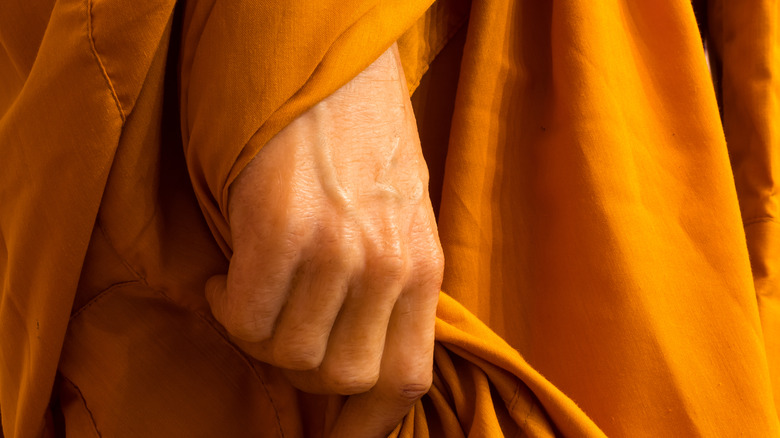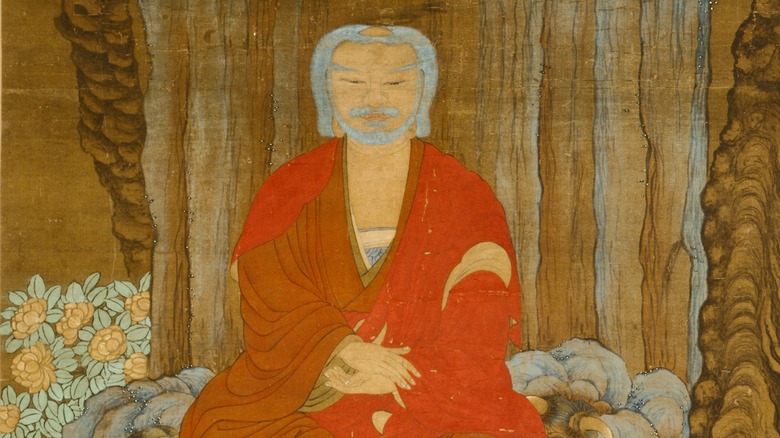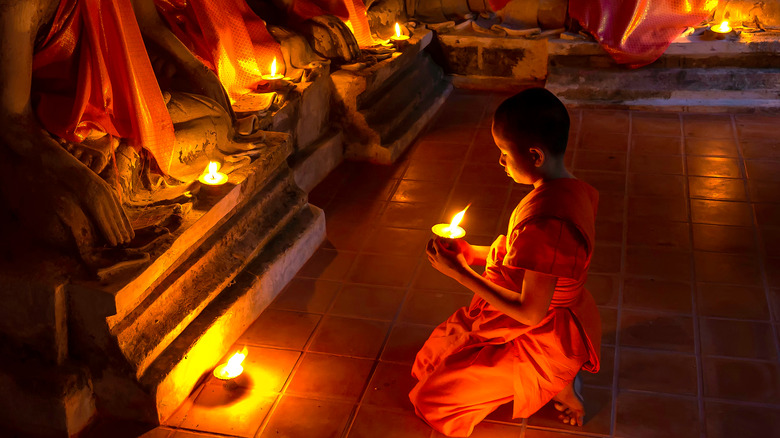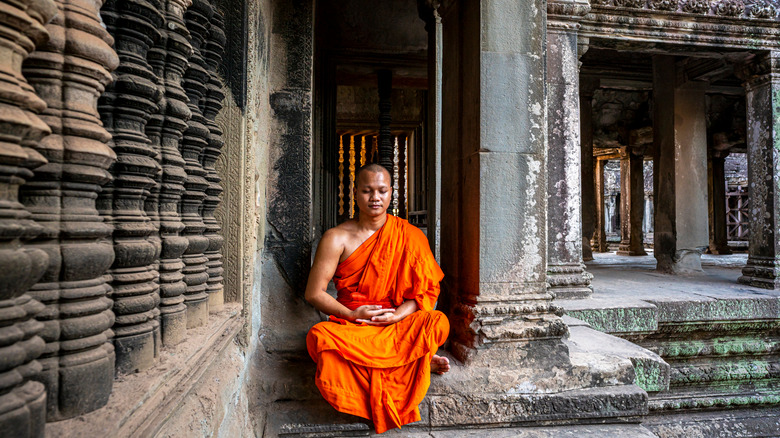Why Buddhist Monks Wear Orange
Worldwide there are many Buddhist traditions, and many shades of monks' robes. Monks of the Theravada Buddhist tradition, practiced primarily in Thailand, Cambodia, and Sri Lana, wear bright orange or saffron robes, according to Buddhism Zone. The tradition goes back 25 centuries to the time of Siddhartha Gautama — the Buddha, a historical figure and founder of Buddhism, who lived in India in the fifth century B.C., according to National Geographic.
As a young man, Gautama was not looking to start a major world religion; he was seeking enlightenment. He followed the Hindu religious tradition, in which ascetics — holy men who traditionally gave up worldly pleasures — wore orange robes. In the Hindu tradition, orange represented purity and sacrifice, according to Buddhism Zone. Orange is one of the colors in fire, which Hindus used to burn sacrificial offerings such as grain and milk. As Gautuma set his own path, he borrowed from the Hindu tradition.
The early days of Buddhism
Siddhartha Gautama was born into wealth as a prince, according to National Geographic, but gave up that life to be an ascetic with no worldly possessions as he tried to gain enlightenment. Eventually he settled on what he called "the Middle Way": neither wealth nor complete poverty and sacrifice, but something in between. Having found "the Middle Way," he achieved enlightenment while meditating under the Bodhi (awakening) tree. Passing on his knowledge to others, he was called the Buddha, meaning "enlightened one" in Sanskrit.
As the Buddha gained students or followers, he devised a standard garb for them to wear, in a color similar to that of Hindu ascetics. Early Buddhist monks made their robes out of "pure," meaning scavenged rags that would otherwise go to waste, according to Buddhism Zone. Once the robes were assembled and sewn, they were washed and dyed with saffron, for a bright hue halfway between yellow and red.
The color of flame
Besides the fact that saffron was one of the natural dyes available 25 centuries back, and used in the Hindu tradition, the Buddha had his own reason for choosing the bright color, according to Buddhism Zone. To the Buddha, saffron symbolized flame, which in turn was a symbol of truth. Seeing a Buddhist monk dressed in the color of flame was meant to put spiritual seekers in a contemplative mood, putting them in touch with their own inner truth as they seek enlightenment.
Since flame is multi-colored, with hints of red and yellow in addition to orange, Buddhism Zone points out that all the colors of flame are used in monks' robes in different Buddhist traditions. Some Buddhist monks wear deep red, for example, and others wear bright yellow. As the flame represents truth, so does each individual color of the flame represent a reflection of the truth.
A tradition carried on today
Today, Buddhist monks no longer patch their robes together from discarded cloth; they use donated or purchased cloth, according to Buddhism Zone. While they no longer use plant-based dyes, they still retain traditional color. In the Theravada Buddhism tradition, monks continue to wear bright orange or saffron robes to emulate the Buddha. Not just anyone can wear a saffron robe; they are reserved for ordained monks only.
To Theravada Buddhists in Thailand, the color represents the light shining in darkness, according to Buddhism Zone. It also represents peace, the divine nature of the wearer, and the purity of their path to enlightenment. According to My Modern Met, the color symbolizes perfection, illumination, and the quest for knowledge. Though orange is not the only color worn by Buddhist monks worldwide, it is among the most historic, dating back to before the time of Siddhartha Gautama, the Buddha.



